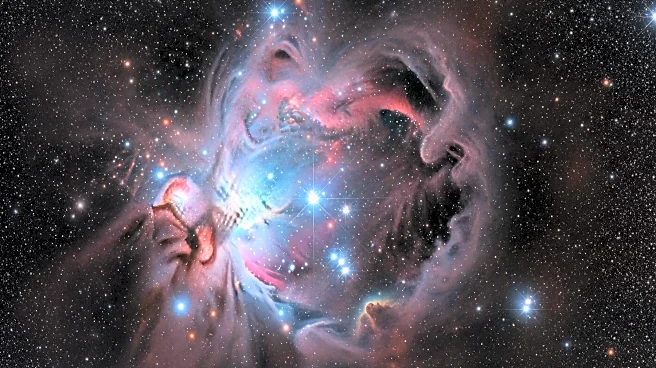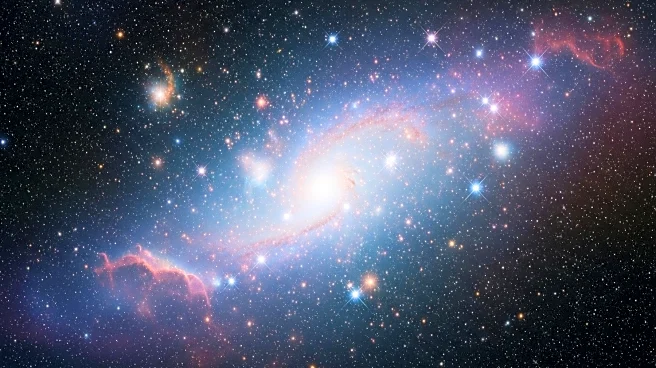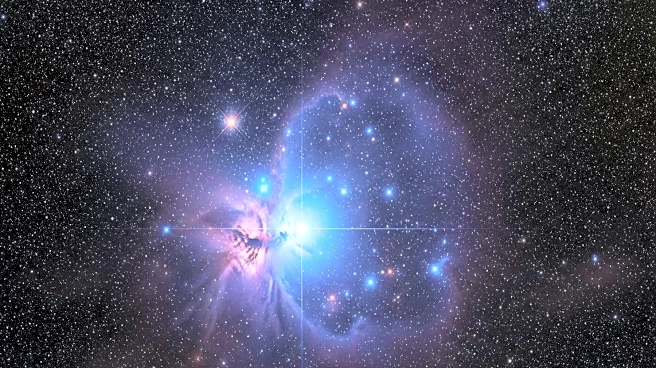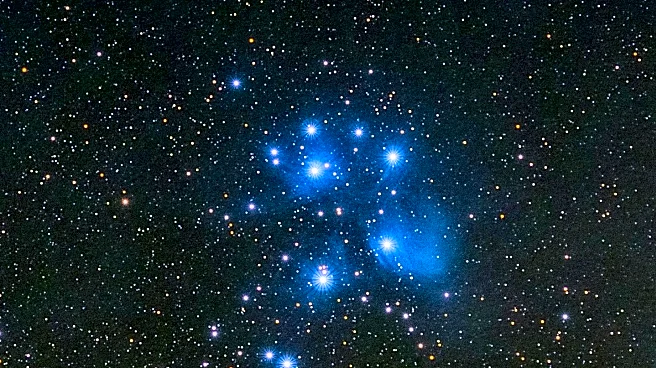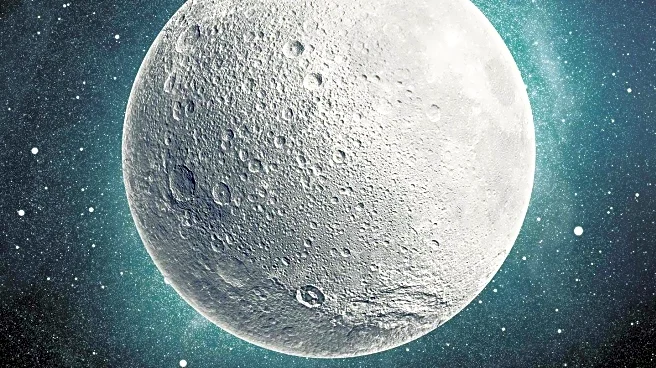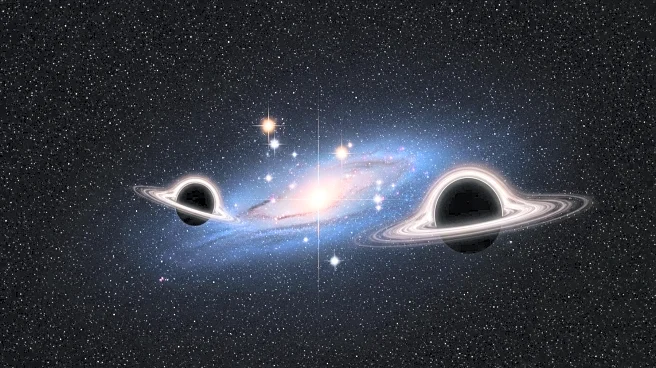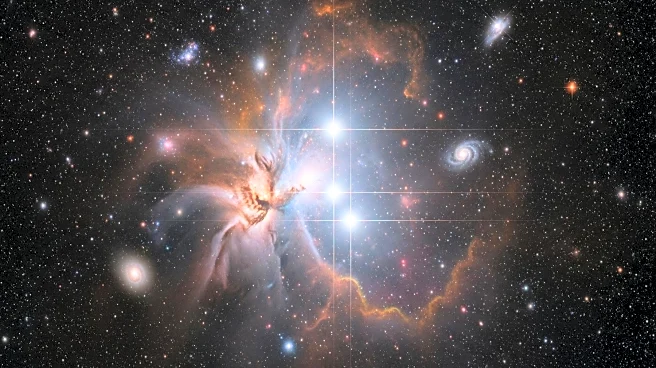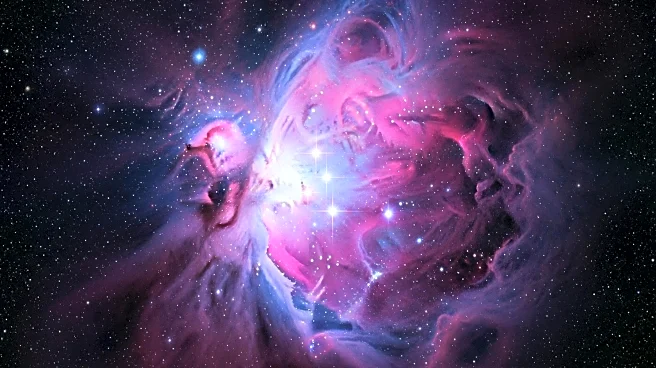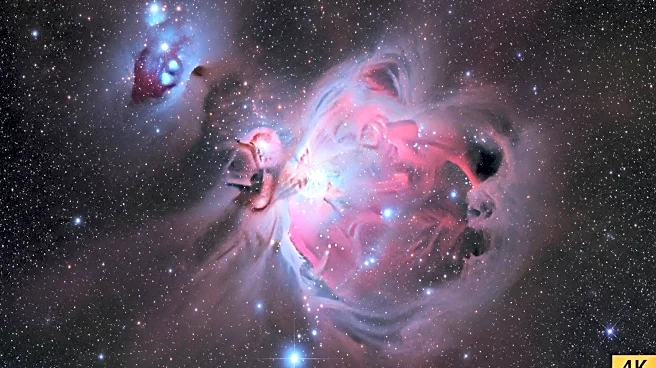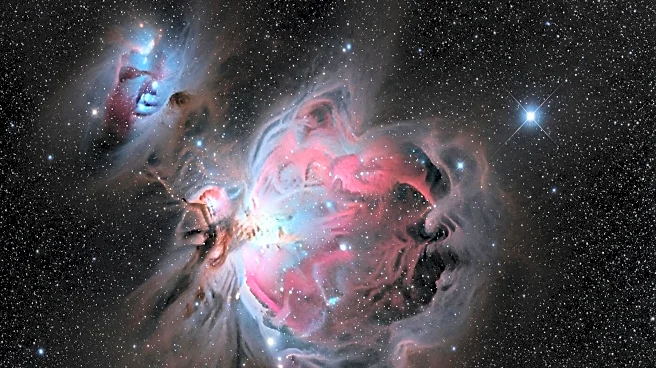What's Happening?
The Hubble Telescope has provided a detailed view of the star cluster Pismis 24, located within the Lobster Nebula, approximately 5,500 light-years away. This cluster is notable for containing some of the brightest, youngest, and most massive stars in the Milky Way. The Hubble's observations have revealed stars with masses exceeding 50 solar masses, including a binary star system with components weighing 74 and 66 solar masses. The Lobster Nebula, also known as NGC 6357, is a region rich in gas and dust, facilitating the formation of new stars. The Hubble's images have highlighted the presence of massive stars and the surrounding gas clouds, which reflect and emit light due to the excitation of atoms within them.
Why It's Important?
The observations made by the Hubble Telescope are crucial for understanding star formation and the characteristics of massive stars. These stars play a significant role in the evolution of galaxies, influencing their chemical composition and structure. The data collected by Hubble helps astronomers study the lifecycle of stars and the processes that lead to their formation. The insights gained from these observations can enhance our understanding of the universe and the forces that shape it. The study of massive stars like those in Pismis 24 also contributes to our knowledge of stellar evolution and the dynamics of star clusters.
